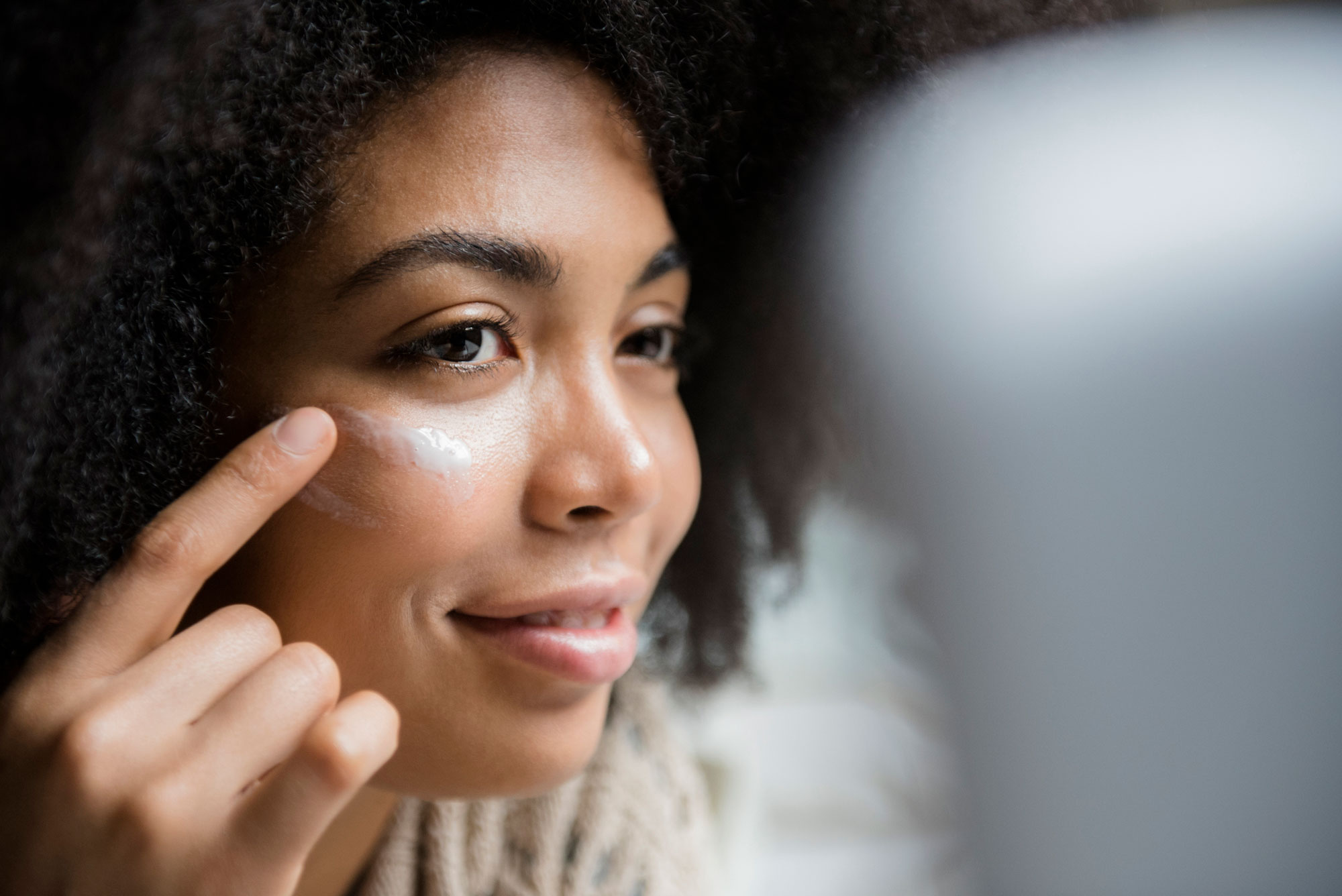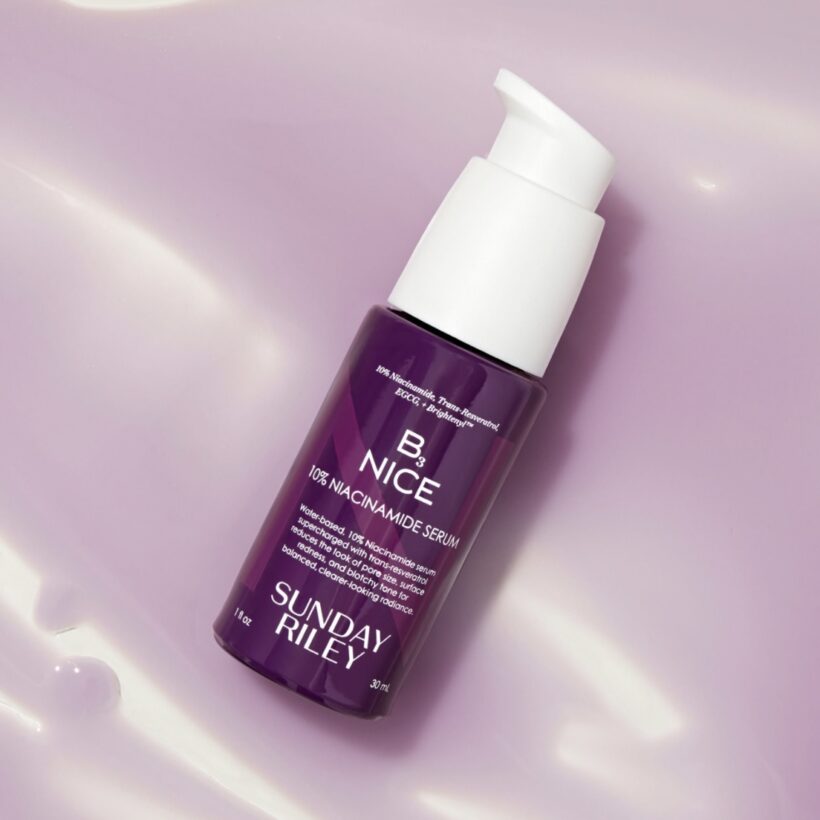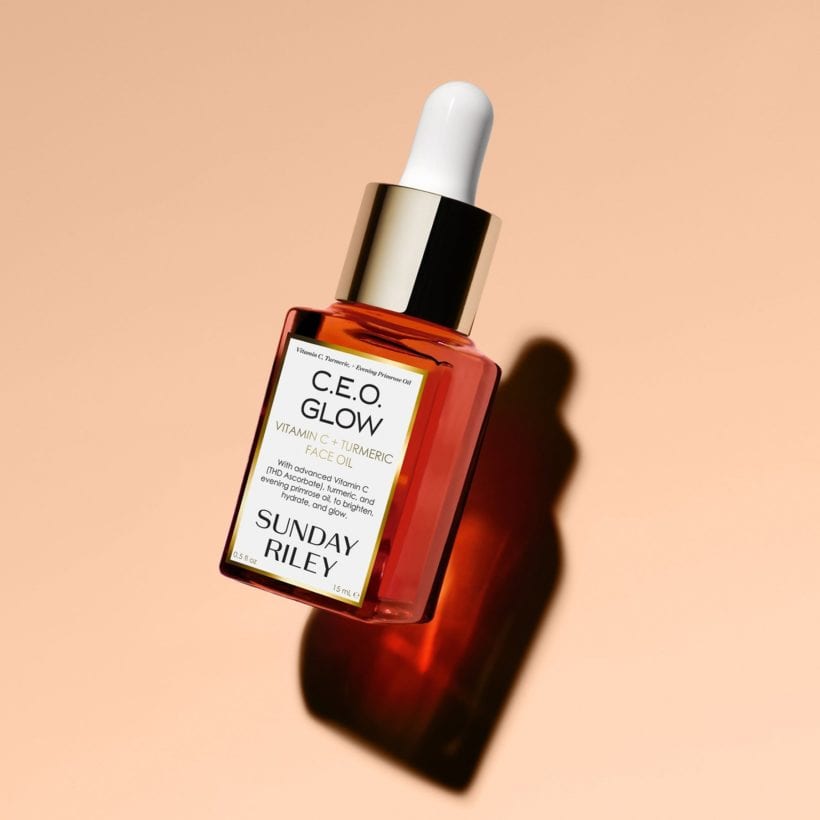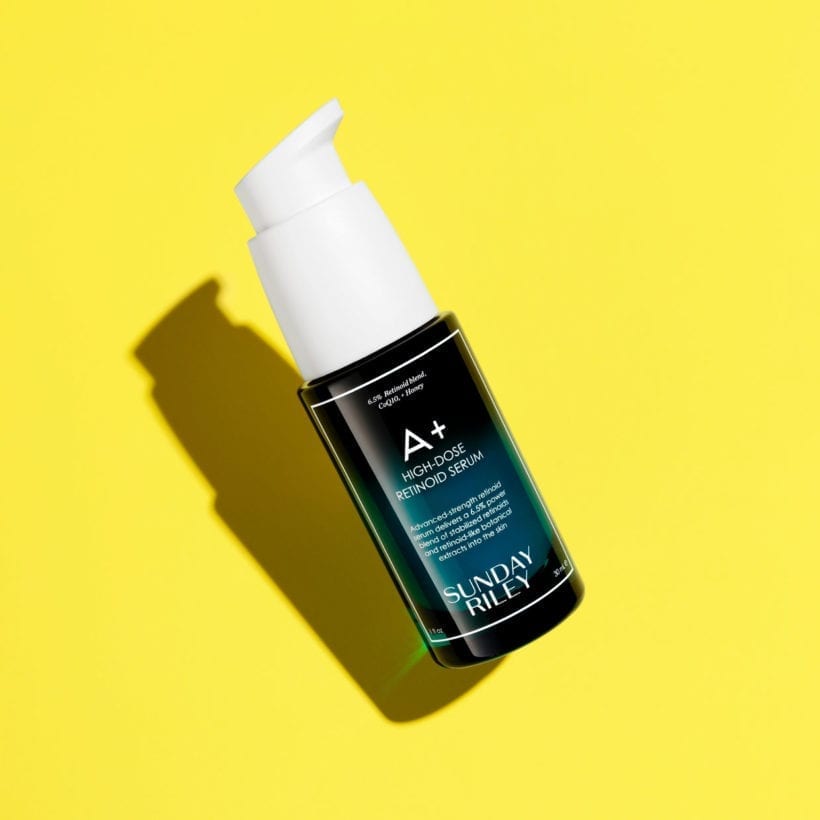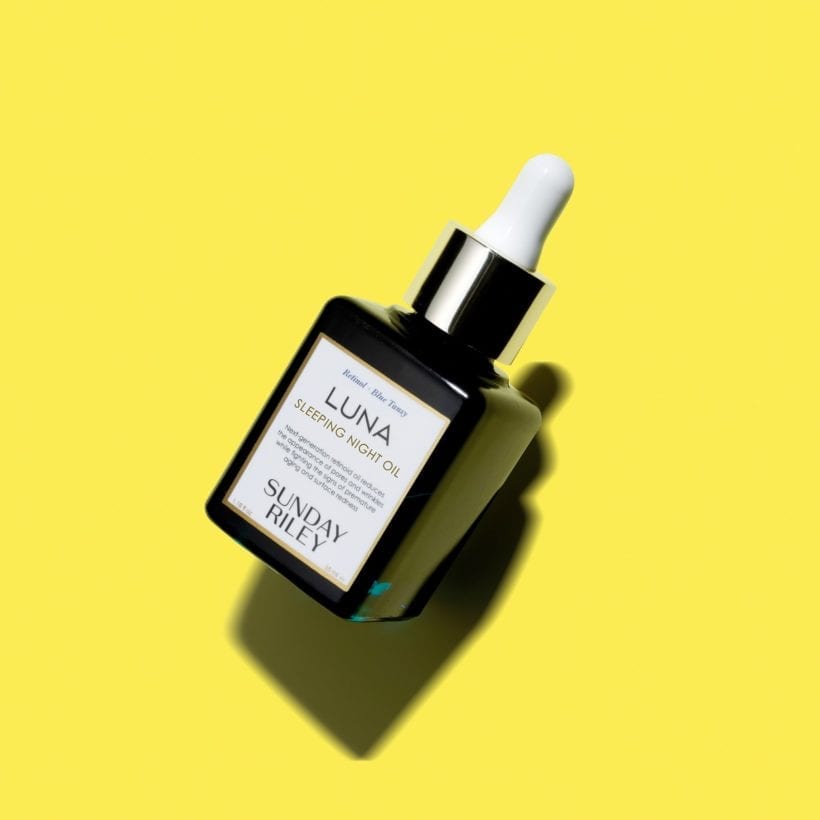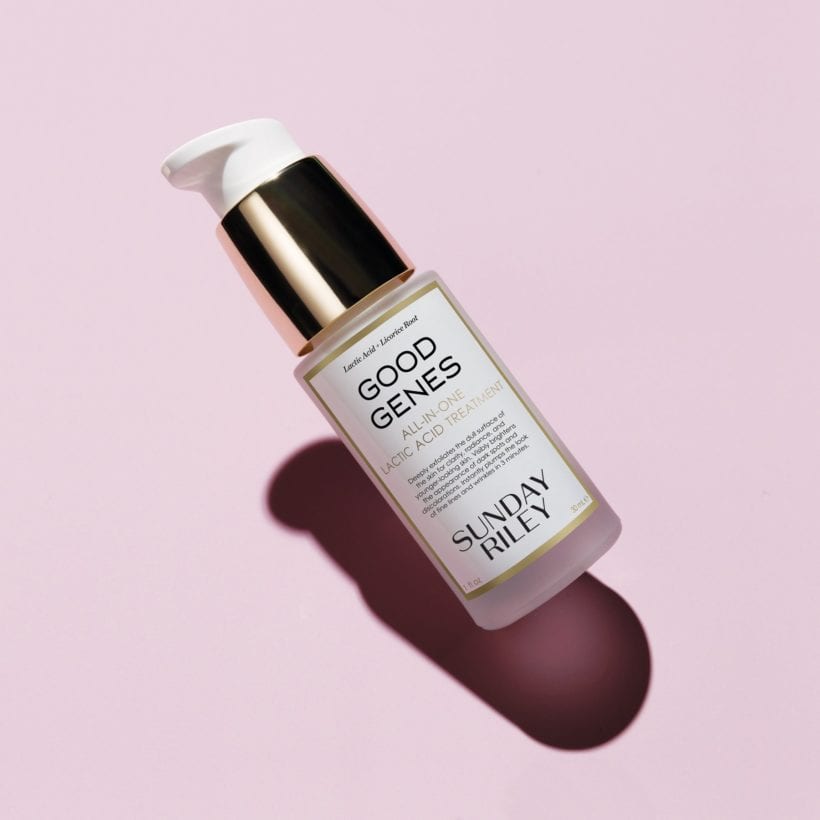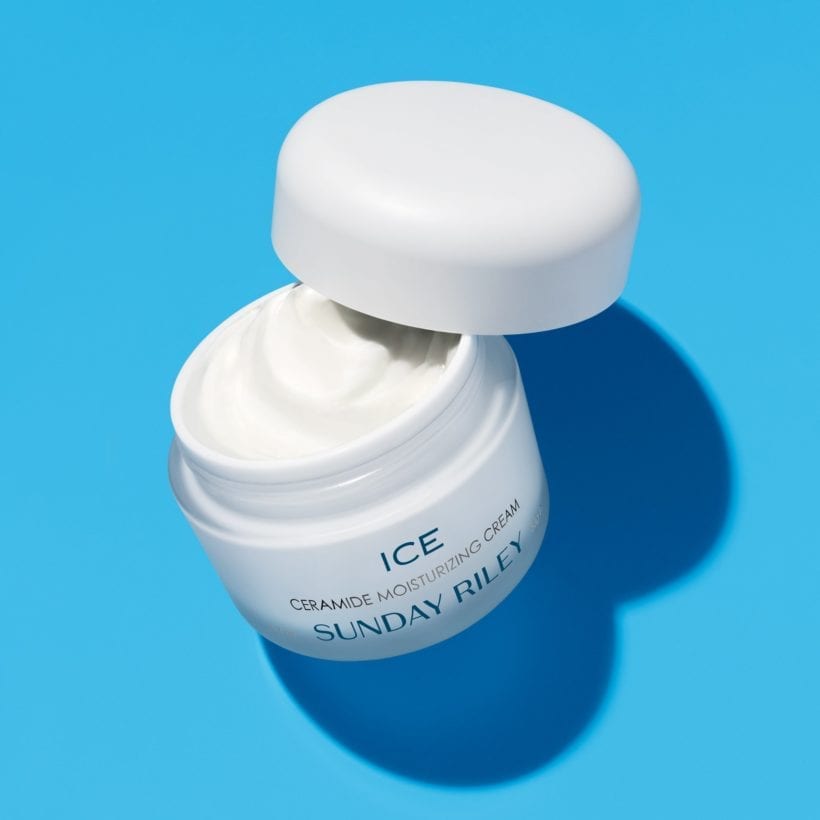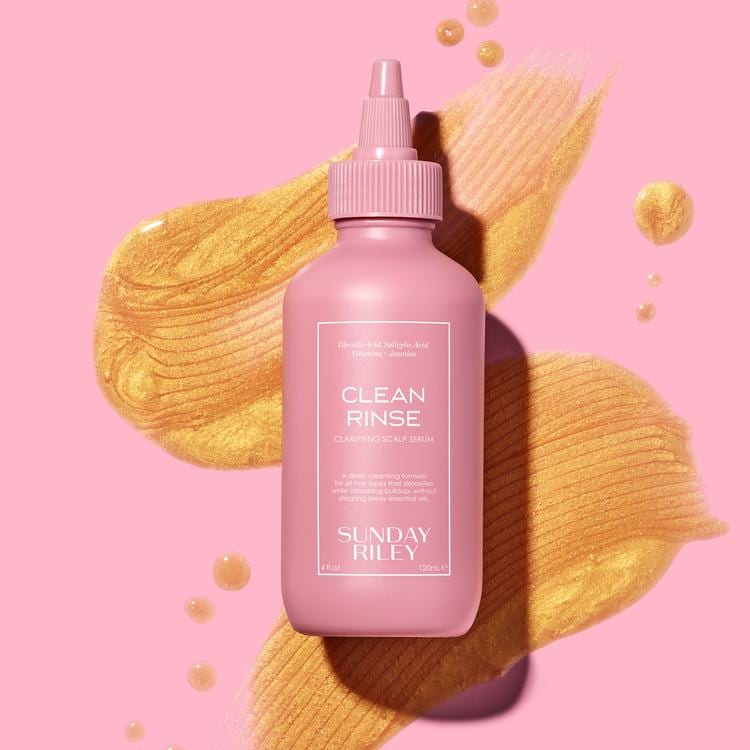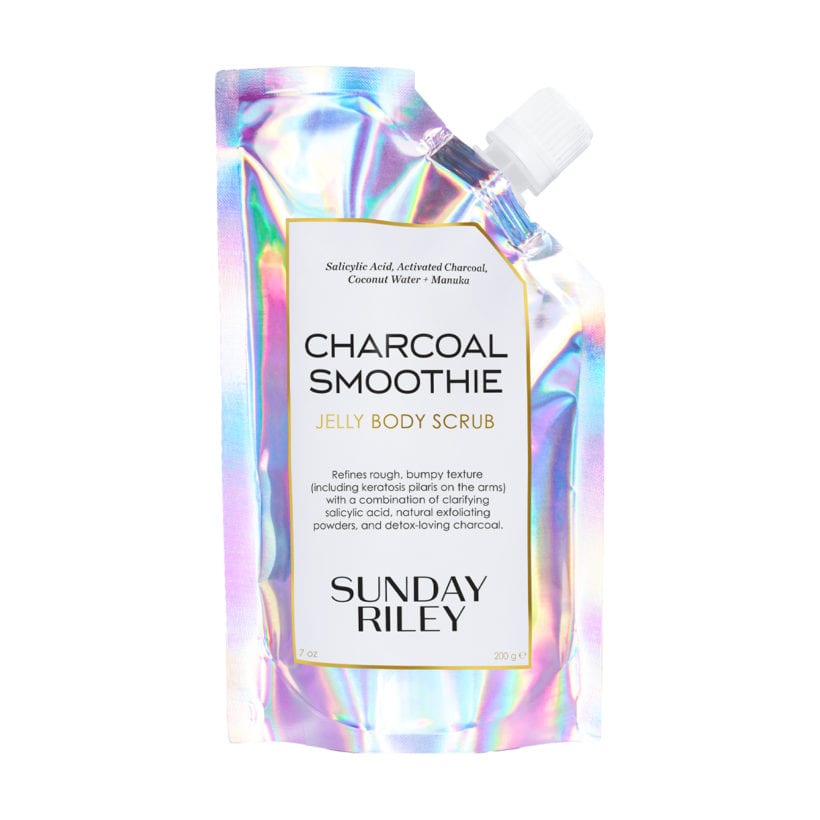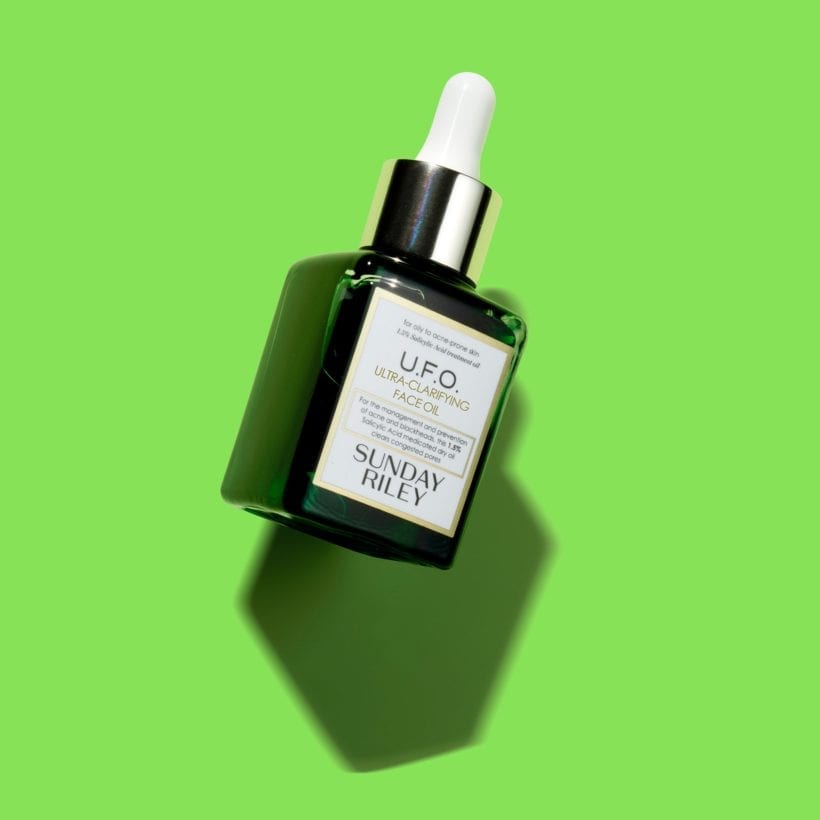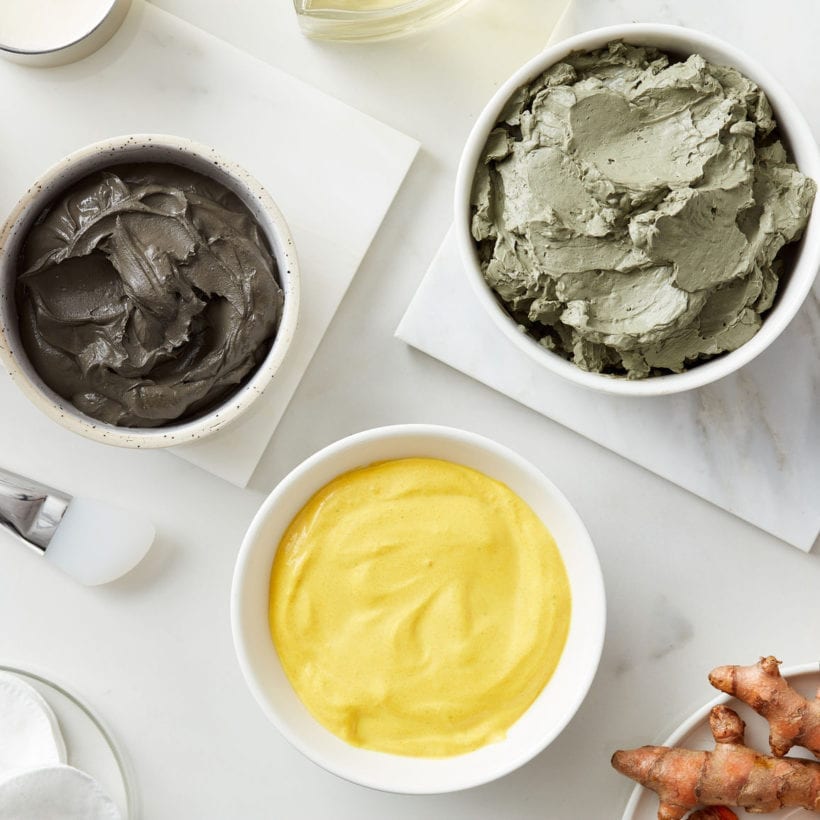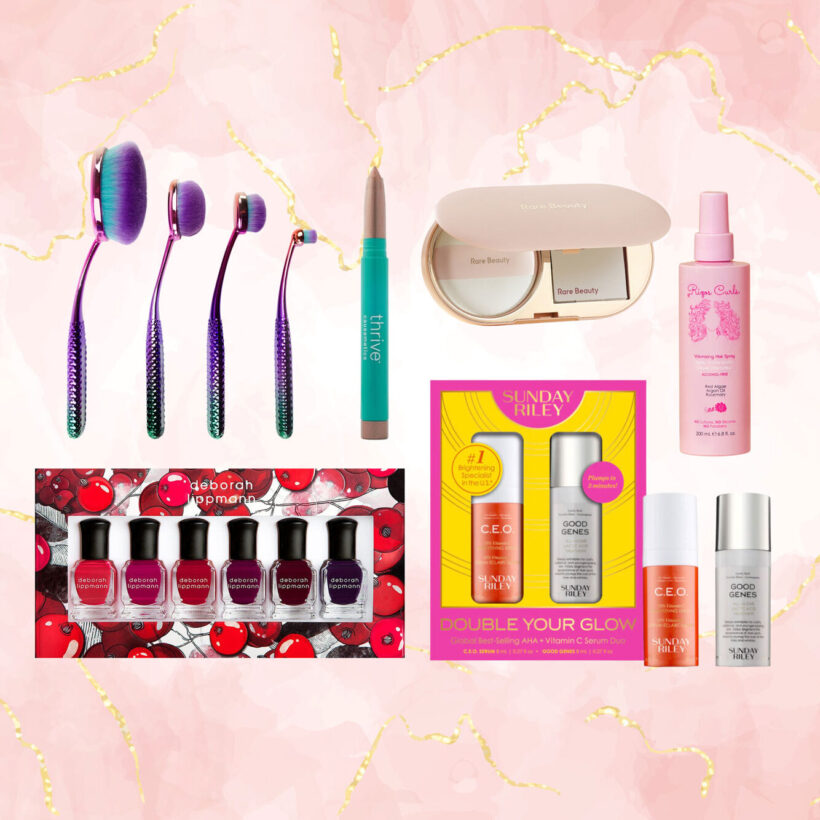Compared to buzzy ingredients like bakuchiol and lutein, niacinamide can seem like a kind of snooze. Also known as vitamin B3, this ingredient has been around for years. Its staying power gives it a major advantage over its newer counterparts. (In fact, it’s one of the few to adhere to the Kligman standards, which determine an ingredient’s efficacy based on whether it penetrates the skin barrier, has a known mechanism of action in skin, and has rigorous research to back up its results.)
Meet the Experts
Sunday Riley , CEO, founder and product formulator
Melanie Palm, M.D., is a dermatologist in San Diego, CA.
Rachel Nazarian, M.D., is a dermatologist in New York City.
Incorporating niacinamide into your routine is worth it for many reasons, whether you’re dealing with dryness or discoloration.
Benefits of Niacinamide in Skincare
- Builds Keratin: Niacinamide helps the skin build keratin, a protein that keeps skin firm and healthy.
- Strengthens Skin Barrier: It aids in the development of a ceramide barrier, which retains moisture and protects against environmental damage.
- Antioxidant Protection: Niacinamide is a potent antioxidant that protects the skin against free-radical damage, making it an anti-aging powerhouse.
- Anti-Inflammatory: It has anti-inflammatory properties, reducing visible redness and irritation in the skin.
- Regulates Oil Production: Niacinamide helps control oil production, keeping pores clear and reducing shininess.
- Inhibits Pigment Production: It interferes with abnormal pigmentation production, helping to brighten the skin and reduce discoloration.
- Support the skin’s healing process with effective aftercare. Using a niacinamide serum like Sunday Riley’s B3Nice 10% Niacinamide Serum can significantly enhance recovery. B3Nice helps to soothe the skin and reduce redness and irritation. Additionally, niacinamide boosts the skin’s barrier function, enhancing its ability to retain moisture and protect against external aggressors. ‘This makes B3Nice an ideal post-microneedling treatment, as it accelerates healing, reduces inflammation, and promotes a clearer, more even complexion. By combining microneedling with B3Nice, you can achieve optimal skin rejuvenation and repair,’ adds Riley.
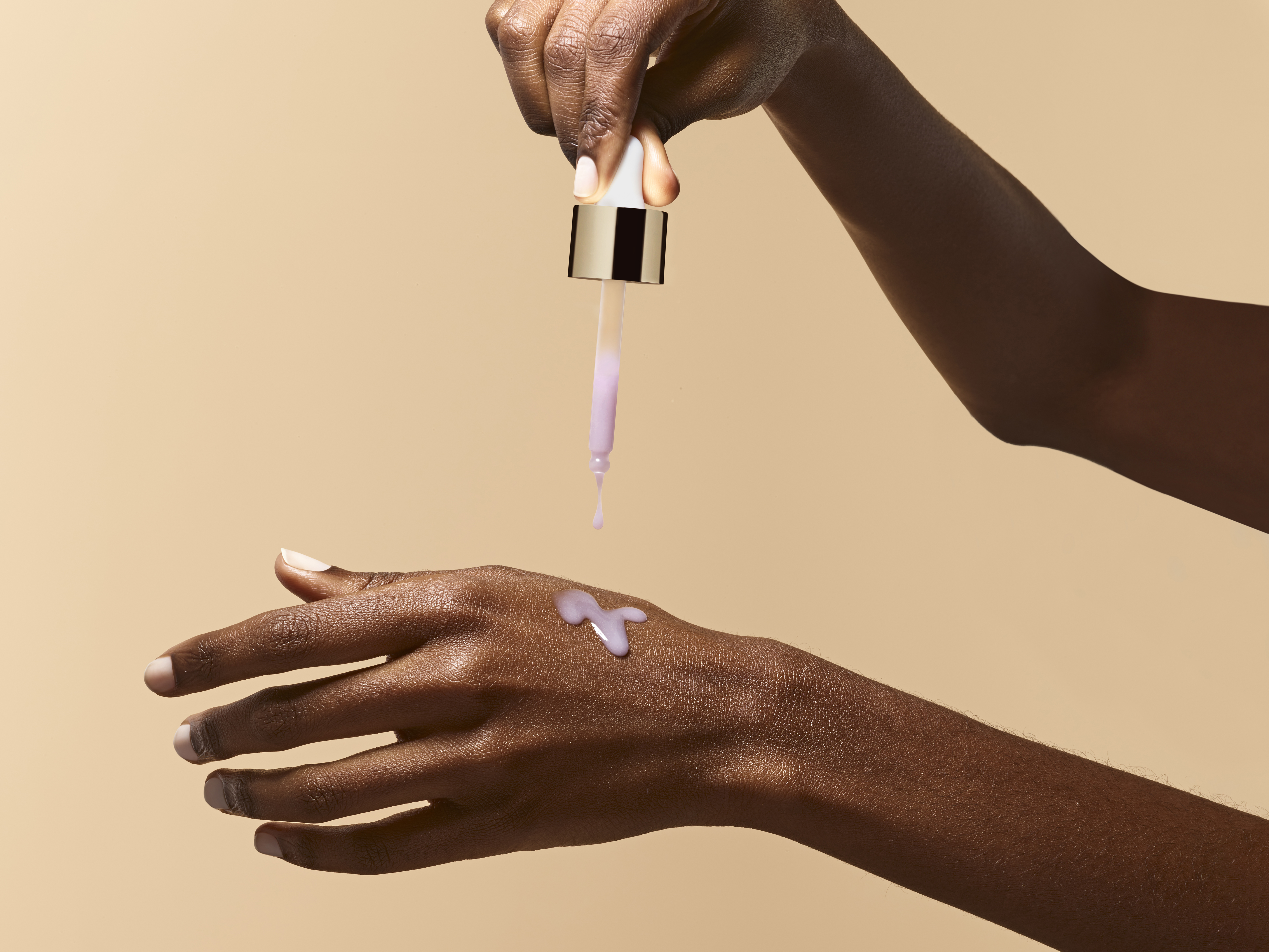
And, unlike other actives, such as alpha hydroxy acids (AHAs), beta hydroxy acids (BHAs), and retinoids, niacinamide is considered a ‘photo-protectant,’ which means it doesn’t make skin more susceptible to sun damage. (That said, you still need a daily broad-spectrum sunscreen of SPF 30 or higher.)
B3 Nice 10% Niacinamide serum was born out of Sunday Riley’s personal experiences and customer feedback. She was inspired by her daughter’s struggle with acne, prompting her to develop a product that could effectively address this issue. After consulting with dermatologists and doing extensive research, Sunday created B3 Nice, which is designed to treat post-acne and improve overall skin health. This serum not only helped her daughter but also became a powerful solution for many others dealing with similar skin concerns. ‘B3 Nice harnesses the power of niacinamide (vitamin B3), a versatile ingredient known for its anti-aging, anti-inflammatory, and acne-fighting properties. Niacinamide increases the body’s natural production of ceramides and free fatty acids, which decline with age, helping to strengthen the skin barrier and prevent dryness. For those with oily skin, niacinamide regulates sebum production, reducing excess oil and minimizing the appearance of pores. This dual action makes it suitable for dry and oily skin types,’ explains Riley.
Clinical studies have shown that niacinamide concentrations between 2% and 5% are effective for various skin issues, including reducing sebum excretion, improving hyperpigmentation, and decreasing inflammation. Sunday chose a 10% concentration for B3 Nice, which she believes is the “sweet spot” — high enough to ensure effectiveness without causing irritation. Beyond this concentration, the risk of skin irritation increases, making 10% the optimal balance for safety and efficacy.
- Within two weeks, 100% of users reported a reduction in post-acne dark spots and oiliness.
- In four weeks, 100% saw clearer skin and reduced redness, with 96% noticing an improvement in wrinkles.
- By eight weeks, 100% of users experienced a reduction in pore size.
In addition to niacinamide, B3 Nice includes resveratrol and Brightenyl. Resveratrol is a potent antioxidant that helps reduce inflammation and hyperpigmentation. Brightenyl, a stabilized form of tri-hydroxy benzoic acid alpha-glucoside, works with the skin’s microbiome to convert into an active form, providing a fresh dose of its benefits upon application. These supporting ingredients enhance the overall efficacy of B3 Nice, amplifying the effects of niacinamide and offering additional skin benefits.
What really sets it apart from the pack, though, is that “niacinamide also plays well with other ingredients — which means you can use it with other actives in your skincare routine,” says Dr. Palm; in fact, research shows that it can even have a synergistic effect with certain ingredients. With that in mind, consider pairing it with these actives to get the best of both worlds.
Niacinamide + Vitamin C
“Vitamin C can be a bit more delicate, and some forms of vitamin C are more unstable than others — and more finicky about what they can be combined with,” says Dr. Nazarian. This led to the (spoiler alert) misconception that you couldn’t combine the two. “But, happily, the two can and often are together in some of my favorite products and regimens,” she says. ‘B3 Nice is designed to work synergistically with other skincare products. Its formulation helps to enhance the absorption and efficacy of other active ingredients, making it a versatile addition to any skincare routine. Whether used in the morning or at night, B3 Nice fits seamlessly into your regimen, boosting the performance of other treatments like C.E.O. 15% Vitamin C Brightening serum and ensuring your skin receives maximum benefits,’ adds Riley.
Plus, they can be a killer combo for getting a more even skin tone since they work via two different mechanisms to inhibit the production of excess pigment. C is a tyrosinase inhibitor, meaning it blocks an enzyme that’s key for pigment production. ‘Melanosomes are the organelles within skin cells that contain melanin, the pigment responsible for skin color. Niacinamide disrupts the transfer of melanosomes from melanocytes (pigment-producing cells) to keratinocytes (skin cells). By reducing this transfer, niacinamide helps decrease the amount of melanin present in the outer layers of the skin, thus reducing hyperpigmentation,’ explains Riley. Translation? They work double-time to brighten skin. This inhibition helps to lighten existing dark spots and prevent new ones from forming.
Niacinamide + Retinoids
The word here is synergy, thanks partly to niacinamide’s ability to soothe skin — and the drying nature of retinoids (a term that includes both prescription-level retinoids and over-the-counter retinol). “Since niacinamide helps with inflammation and redness, pairing it with retinol can help to reduce its irritating effects,” Sunday says.
Combining retinol and niacinamide in a skincare routine enhances efficacy and balances potential side effects. Retinol promotes cell turnover, increases collagen production, and reduces signs of aging like wrinkles and fine lines, while also helping with acne by unclogging pores. Niacinamide boosts the skin’s barrier function, reduces inflammation, regulates sebum production, and improves skin texture and tone. Retinol can cause dryness, redness, and peeling, but niacinamide’s anti-inflammatory properties soothe and calm the skin, reducing irritation and enhancing the moisture barrier. ‘Together, they address multiple skin concerns: retinol targets fine lines, wrinkles, and acne, while niacinamide tackles hyperpigmentation, redness, and uneven skin tone. This combination strengthens the skin barrier and retains moisture,’ explains Riley.
For new retinol users, start with Luna Sleeping Night Oil. Luna’s formulation includes a gentle retinol complex combined with soothing blue tansy and chamomile, which helps minimize potential irritation while delivering the anti-aging benefits of retinol. Once your skin has acclimated to Luna, you can introduce the more potent A+ High-Dose Retinoid Serum into your routine. By alternating between Luna and A+, you can enjoy the full spectrum of retinol benefits, from improved skin texture to reduced fine lines, while minimizing the risk of over-exfoliation and irritation. This gradual approach ensures your skin adapts effectively, maximizing results and maintaining a healthy complexion.
In boosting skin’s resilience for retinoids, niacinamide can help you stick with a consistent routine, which makes for firmer, smoother, and brighter skin over time (versus quitting a few weeks in). The two can also make retinoids more tolerable for delicate areas of the face, like the eyes; in Sunday Riley 5 Stars Retinoid + Niacinamide Eye Serum, for instance, you can get the collagen-stimulating perks of a retinoid without the downtime.
Niacinamide + Alpha Hydroxy Acids
If summer left you with more dark spots than you can count — or just a general dull look — this pair will help brighten things up. “Pairing niacinamide with AHAs can help to amplify brightening benefits, which may be ideal for those with hyperpigmentation and discoloration,” Dr. Palm says.
‘Combining an AHA with niacinamide provides a holistic approach to skincare. Good Genes helps to resurface the skin, while B3Nice soothes and strengthens the skin barrier. Good Genes exfoliates and removes dead skin cells, which can improve the absorption of niacinamide from B3Nice, enhancing its effectiveness. The exfoliating action of Good Genes combined with the anti-inflammatory and brightening properties of B3Nice can lead to a smoother, more even complexion. Niacinamide boosts the production of ceramides and fatty acids, which improve the skin’s barrier function, helping to lock in moisture and protect against environmental damage,’ says Riley.
Niacinamide + Hyaluronic Acid
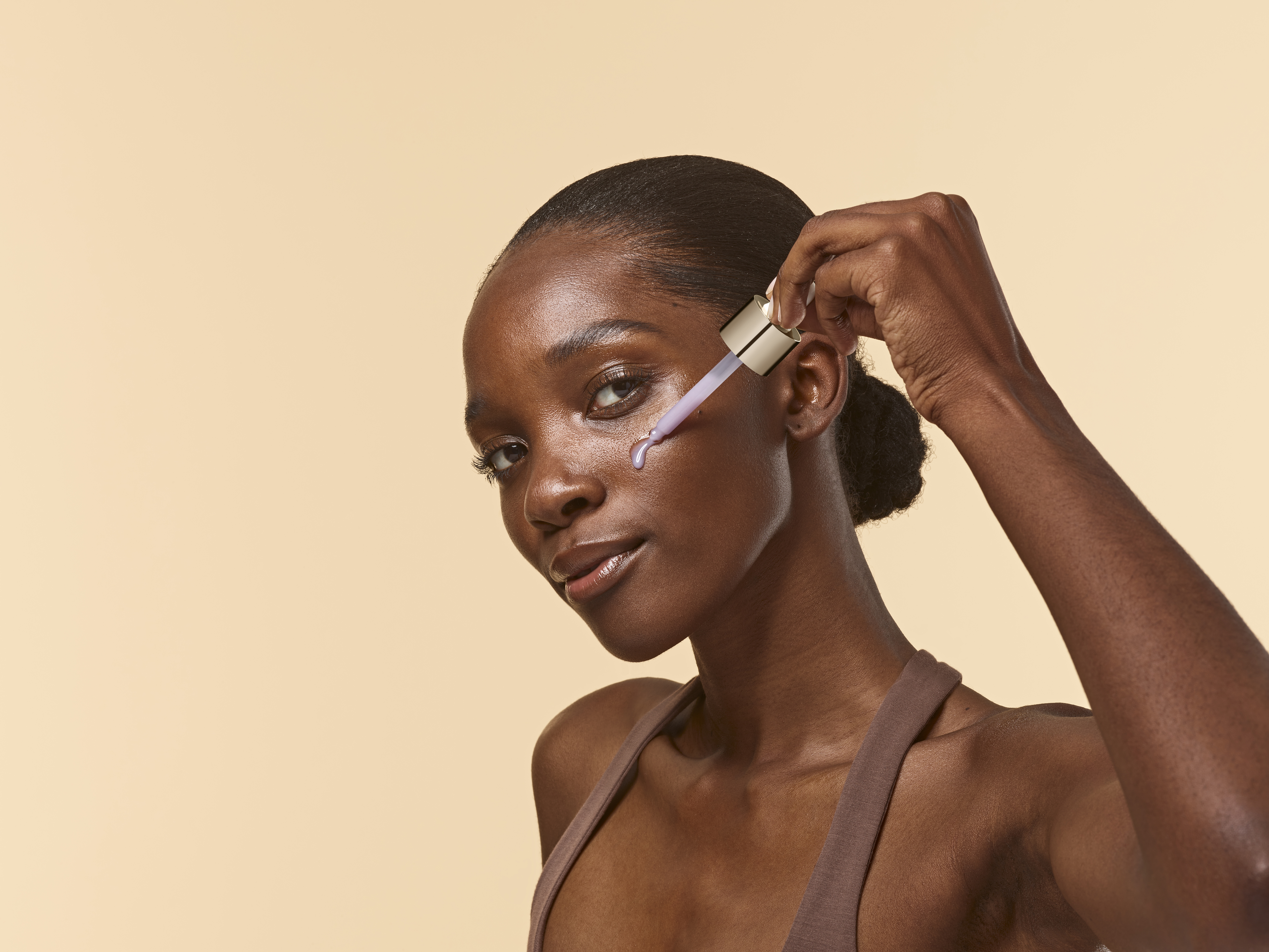
For stubborn dryness, use these powerhouses together. “Combining hyaluronic acid with niacinamide can amplify hydrating benefits,” says Dr. Palm. “Niacinamide helps to strengthen the skin’s lipid barrier, locking in the moisture from the hyaluronic acid.” In other words, the combo allows for longer-lasting hydration.
Niacinamide + Botanical Brighteners
In addition to vitamin C, niacinamide plays well with other brightening ingredients, too. Dr. Nazarian recommends seeking out licorice root extract like in Good Genes All-in-One Lactic Acid treatment in particular, which, when paired with niacinamide, can help fade excess pigment and even out skin tone.
‘Niacinamide, known for its anti-inflammatory and sebum-regulating properties, helps to reduce redness, minimize pore size, and control oil production. On the other hand, licorice root is renowned for its ability to brighten the skin and reduce hyperpigmentation. It contains glabridin, an active compound that inhibits the enzyme responsible for melanin production, thereby lightening dark spots and preventing new ones from forming. Together, these ingredients work to even out skin tone by reducing the appearance of dark spots and redness while also soothing and calming the skin,’ adds Riley.
Niacinamide + Ceramides
According to a study published in the Journal of Clinical and Aesthetic Dermatology, niacinamide enhances ceramide synthesis, improving skin barrier function and hydration. ‘Niacinamide stimulates the production of ceramides in the skin. Ceramides are lipid molecules that are essential components of the skin barrier. Increased ceramide levels help to strengthen the skin barrier, improving its ability to retain moisture and protect against environmental damage. A stronger skin barrier reduces transepidermal water loss (TEWL), preventing dryness and keeping the skin hydrated, making it particularly effective in treating conditions like atopic dermatitis and dry skin. Enhanced hydration and reduced irritation, making the skin look plumper and healthier. Reducing inflammation helps to maintain the integrity of the skin barrier, which is often compromised during inflammatory conditions. Niacinamide’s anti-inflammatory effects complement the barrier-repairing properties of ceramides,’explains Sunday.
Niacinamide + Salicylic Acid
Niacinamide and salicylic acid together can address a variety of skin concerns, particularly those related to acne, oiliness, and inflammation. ‘Niacinamide helps to regulate sebum production, reducing overall oiliness, while salicylic acid penetrates the pores to dissolve excess oil and prevent clogging. Niacinamide enhances the skin’s barrier function, ensuring it remains hydrated and resilient, which balances the exfoliating action of salicylic acid that removes dead skin cells and cleanses pores,’ explains Riley.
Together, they brighten skin by inhibiting melanin transfer, promoting cell turnover, improving skin texture, and reducing post-inflammatory hyperpigmentation. This powerful duo offers comprehensive benefits, leading to clearer, brighter, and more even-toned skin. ‘Salicylic acid is one of my favorite ingredients for acne. Salicylic is oil-soluble, so it dissolves the oily build-up deep within the pore. It can also be very drying, but that’s why I like U.F.O. – because it’s salicylic acid but in an emollient base, so it’s not going to strip your skin, and you can use it every single day,’ adds Riley.
We only recommend products we have independently researched, tested, and loved. If you purchase a product found through our links, Sunday Edit may earn an affiliate commission.
